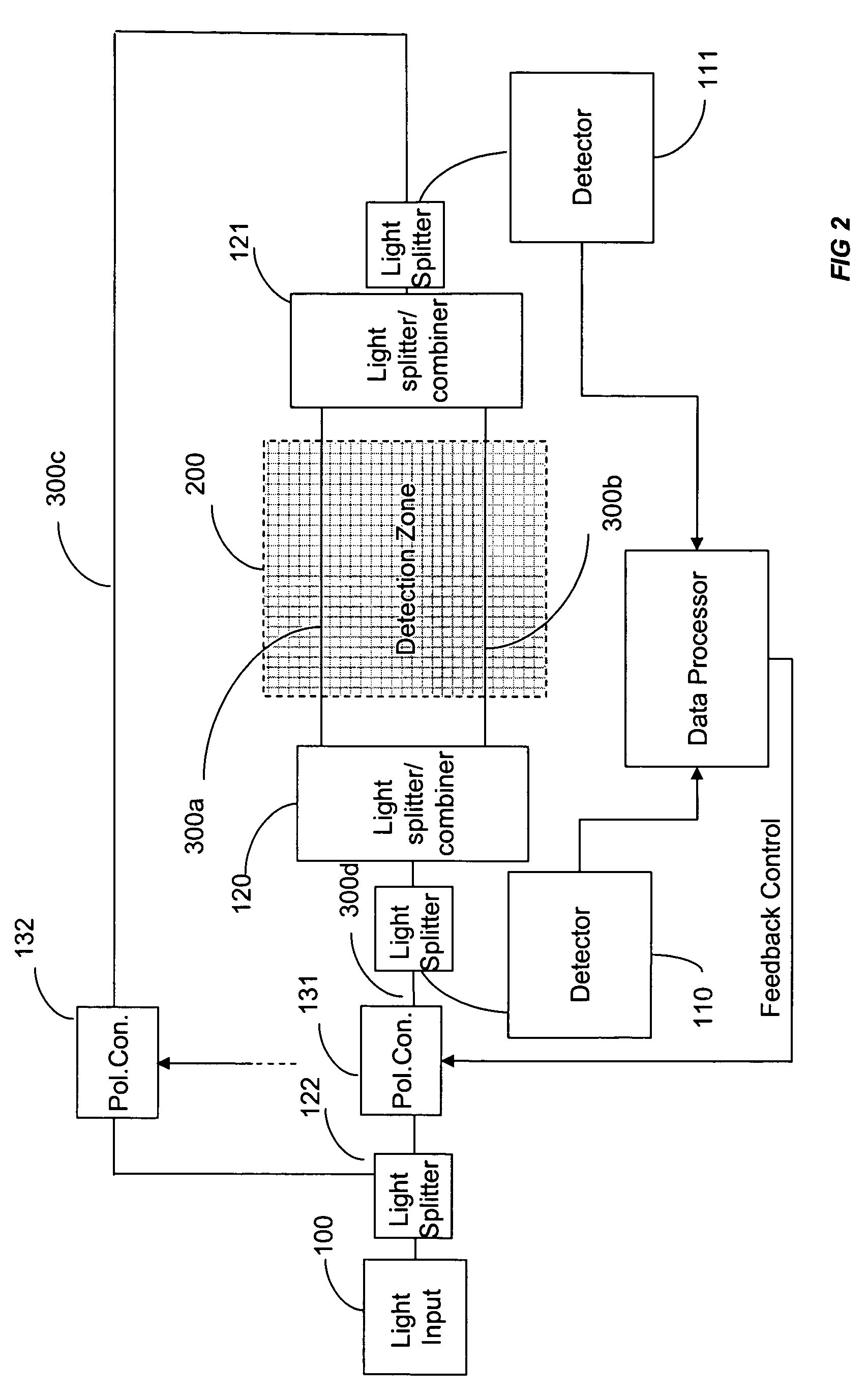Distributed fiber sensor with interference detection and polarization state management
- Summary
- Abstract
- Description
- Claims
- Application Information
AI Technical Summary
Benefits of technology
Problems solved by technology
Method used
Image
Examples
Embodiment Construction
[0045] The invention manages variations in polarization aspects of two or more light signals, in a system that uses interference between the light beams for counter-propagating light signals in discerning the location along an extended waveguide at which a detectable occurrence has disturbed the light propagation conditions for both light signals. The disturbance locally affects two counter-propagating optical signals simultaneously, but is detected after the affected light beams have propagated along paths of different length.
[0046] Corresponding signal variations are received from the two signals at different times due to the different path lengths. These variations comprise intensity variation caused by the phase variations that result from a disturbance-induced change in optical propagation conditions. According to the invention, the received signals are combined in a polarization insensitive way, by controlling the polarization state of the input beams. In this way, the time d...
PUM
 Login to View More
Login to View More Abstract
Description
Claims
Application Information
 Login to View More
Login to View More - R&D
- Intellectual Property
- Life Sciences
- Materials
- Tech Scout
- Unparalleled Data Quality
- Higher Quality Content
- 60% Fewer Hallucinations
Browse by: Latest US Patents, China's latest patents, Technical Efficacy Thesaurus, Application Domain, Technology Topic, Popular Technical Reports.
© 2025 PatSnap. All rights reserved.Legal|Privacy policy|Modern Slavery Act Transparency Statement|Sitemap|About US| Contact US: help@patsnap.com



